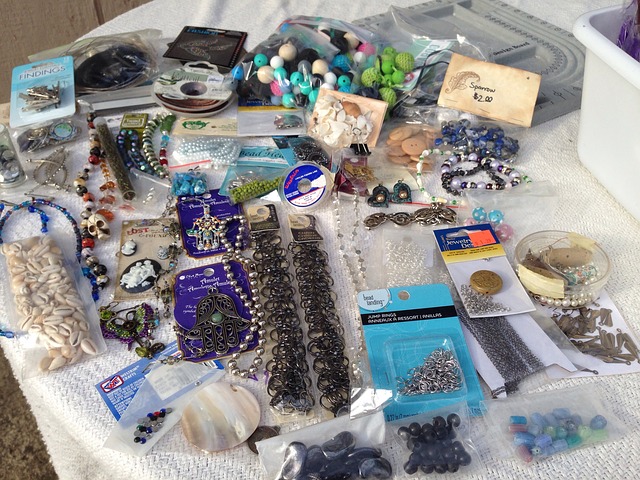Posted by Cynthia Boris
 Winter is over. It’s time to open the windows, clear out the clutter and start fresh. Let’s begin with your craft room / space / desk / corner of the dining room. Do you have supplies you don’t need? Items you bought for a project you’ll never get to? Leftovers from a project you won’t make again? Dried up paints, too small fabric bits, and broken objects?
Winter is over. It’s time to open the windows, clear out the clutter and start fresh. Let’s begin with your craft room / space / desk / corner of the dining room. Do you have supplies you don’t need? Items you bought for a project you’ll never get to? Leftovers from a project you won’t make again? Dried up paints, too small fabric bits, and broken objects?
No?
Really?
Look again. I’m willing to bet that it’s less a case of “not having” those things as it “not wanting to get rid of” those things. Deep down inside, you know that there’s a huge benefit to those who know how to declutter. You feel lighter. You feel more energized and creative. And in the process, you might unearth a surprise that you’d forgot about in the bottom of a Michael’s Arts and Crafts bag.
So, cleaning out your supplies is a good thing. What hurts is dumping those unnecessary items into the trash. That’s unconscionable and I’d never suggest such a thing. What I am suggesting is that you organize a community craft castoff sale that will benefit you, your fellow crafters and your favorite charity.
Bangles, Buttons and Bows
A craft castoff sale is just like a neighborhood garage sale, but instead of selling old toys, clothes and appliances, the participants sell nothing but craft items they can’t use. That piece of floral fabric that’s too small for your dressmaking business, is perfect for the lady down the street who quilts. Over your neon color phase? There are a dozen teen crafters who would gladly buy up those beads.
When it comes to a crafting castoffs, one crafter's trash truly is another’s treasure and that’s what makes this whole thing work. You don’t even need to bring in a huge number of shoppers to be a success, because the sellers will often buy up as much as they brought to sell. And that’s okay, because what they take home will be new and inspiring.
A Separate Piece
There are two ways to run a craft castoff sale; garage sale style or charity shop style.
The garage sale model means everyone sells their own goods at their own table. For this to work, you’ll need at least a dozen sellers, either in one building or one neighborhood. Everyone handles their own cash and pockets the profits. If you want to raise money for charity, charge a small fee for the privilege of selling or ask for a percentage of the profits. (On the honor system, of course).
Charging may sound like it will drive sellers away, but it will actually have the opposite effect. Once people pay – knowing the money is going to charity – they’re less likely to back out at the last minute, leaving you with only a couple of sellers on the big day.
If your crafty friends are more interested in giving than receiving, run your sale charity shop style. Solicit donations from everyone you know. Put together bundles of smaller items, then run one large sale or auction on the given date. With this model, you only need one person handling money and you can use an online payment system to accept credit cards. Credit cards means people will spend more, so don’t sweat the fees.
At the end of the day, all of the money goes to charity with the exception of a few dollars to feed your loyal crew.
Come One, Come All
The success of a crafty sale depends on your ability to get the word out to both sellers and buyers. Give yourself plenty of time to line up sellers or collect donations before you start promoting the sale. You want to make sure you have enough inventory to make it worth everyone’s time.
Contact community centers, churches and schools to see if you can run the sale inside or outside their facility. Ideally, you want to find a place that will let you set up for free, but be prepared to hear the words “insurance”, “liability” and “no”, over and over again. Keep at it. You’ll find a place.
Once the date, time and location are set; start spreading the word via social media, sites like Craigslist, and craft forums. Don’t forget to go old school with flyers. Most Starbucks and libraries still have bulletin boards for posting.
On the day of the sale, you’ll need helpers to put up tables and chairs and direct sellers to their spaces. Put up signs leading from the main roads to your location and make sure they’re big and bright.
After the sale, keep a few helpers around to pick up trash and return the space to its original condition. This is important if you want to run your sale again next year.
Running a craft castoff sale is a lot of work, but if all goes well you’ll not only clear your clutter, you’ll get meet other crafters in your community and that experience is worth its weight in 10 yards of fabulous, purple, brocade fabric.




